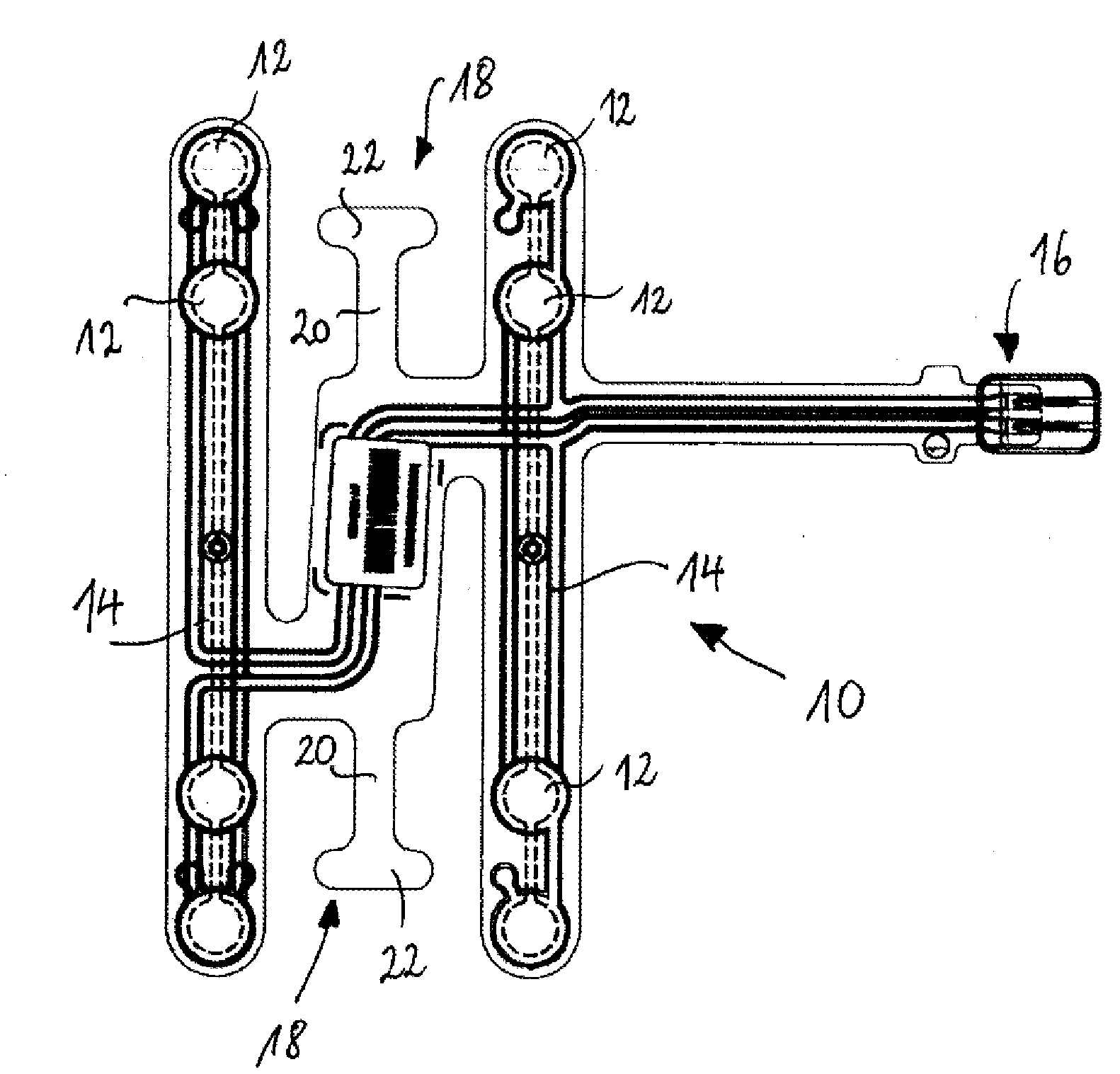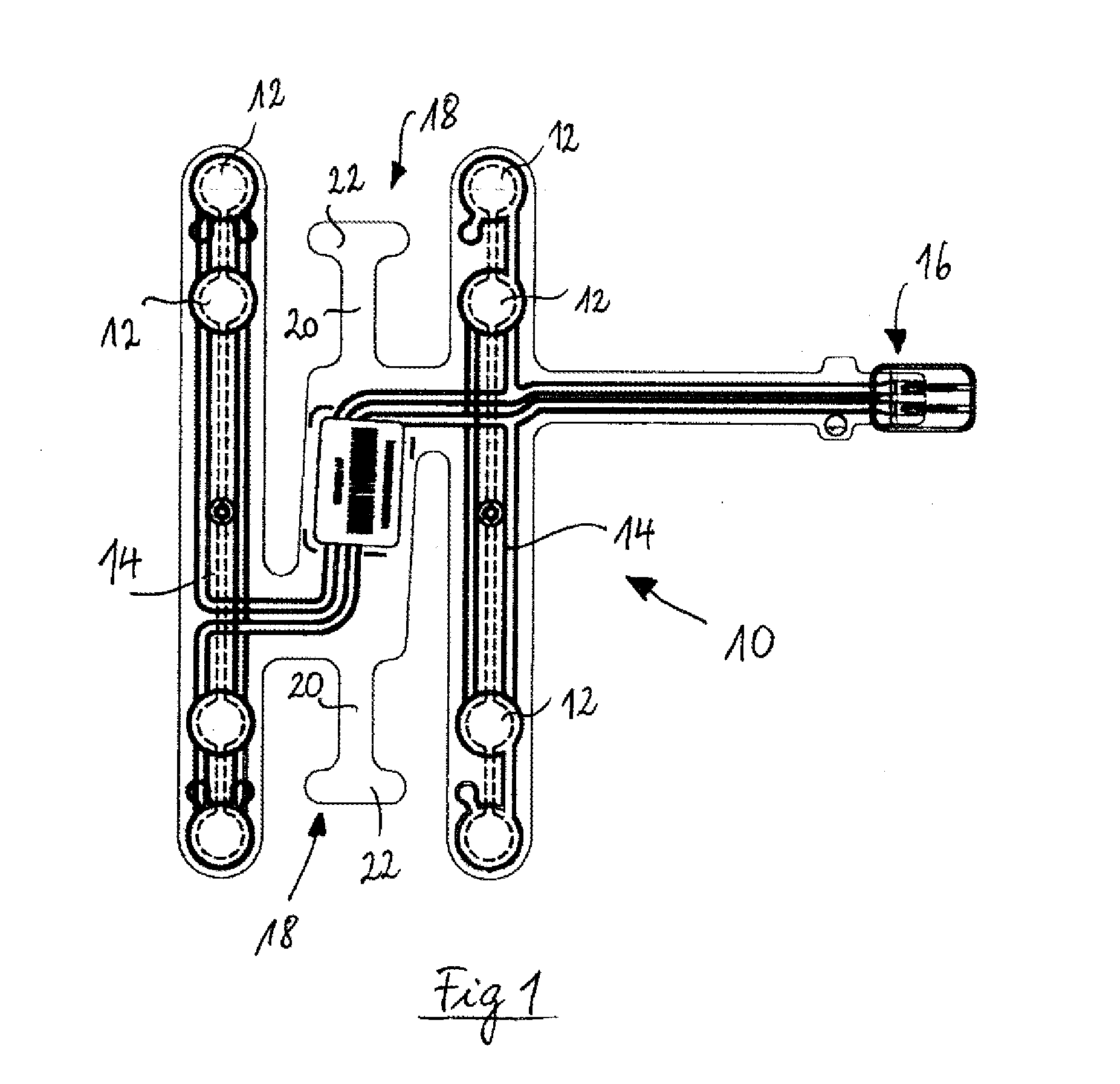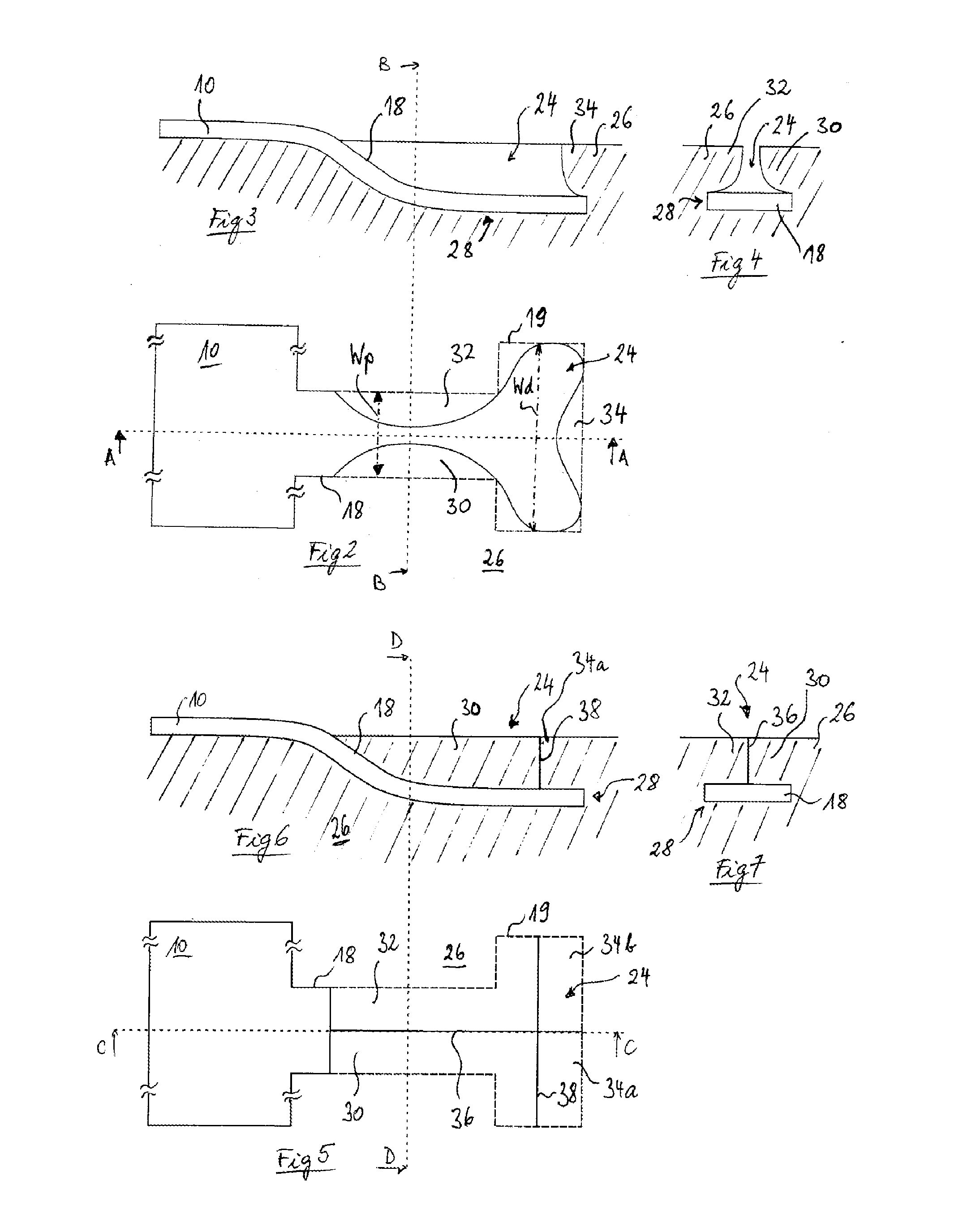Seat Foam with Sensor Mat
a sensor and seat foam technology, applied in the direction of chairs, pedestrian/occupant safety arrangements, vehicular safety arrangements, etc., can solve the problems of sensor movement relative to seat foam or cushion, precise positioning of sensor mat, new problems, etc., and achieve the effect of increasing passenger comfor
- Summary
- Abstract
- Description
- Claims
- Application Information
AI Technical Summary
Benefits of technology
Problems solved by technology
Method used
Image
Examples
first embodiment
[0028]FIGS. 2-4 show different views of an anchor tab 18 inserted into a corresponding incision 24 of the seat foam 26 according to the invention (the hidden contour of anchor tab 18 is indicated in FIG. 2 by the dashed line 19). The incision 24 can be formed by insert moulding during or cutting after the foaming process. The incision 24 has at its bottom a channel 28 for accommodating the anchor tab, which extends from the surface into the seat foam 26, in a direction away form the sensor mat 10 (shown only schematically). In the proximal region, the channel bends into the foam body 26 of the seat. In the shown embodiment, the channel remains substantially parallel to the foam surface in its distal region. The seat foam comprises several retaining lobes 30, 32, 34 overlapping partially the channel and fixing the anchor tab 18 in the direction perpendicular to the foam surface. Seen from above, the incision 24 and the anchor tab 18 are substantially T-shaped, so that the anchor tab ...
third embodiment
[0031]FIGS. 8-10 illustrate the invention. The incision is in this case a cavity 24 that extends substantially vertically with respect to the surface of the seat foam and whose vertical cross section exhibits generally the shape of an inverted T. The cavity 24 has an upper (i.e. closer to the surface) cylindrical portion 25 with a first diameter and a lower (i.e. farer from the surface) cylindrical portion 27 with a second diameter, which is substantially higher than the diameter of the upper portion 25. In the illustrated case, the diameter of the lower portion 27 amounts to about twice the first diameter of the upper portion 25. The seat foam 26 thus comprises a substantially annular section 40 located circumferentially around the upper portion 25 of the cavity 24 and above the lower portion 27 of the cavity 24 that retains the anchor tab 18 within the cavity 24. The seat foam 26 is in this example covered with a textile layer 42, e.g. a three-dimensional spacer fabric. The textil...
PUM
 Login to View More
Login to View More Abstract
Description
Claims
Application Information
 Login to View More
Login to View More - R&D
- Intellectual Property
- Life Sciences
- Materials
- Tech Scout
- Unparalleled Data Quality
- Higher Quality Content
- 60% Fewer Hallucinations
Browse by: Latest US Patents, China's latest patents, Technical Efficacy Thesaurus, Application Domain, Technology Topic, Popular Technical Reports.
© 2025 PatSnap. All rights reserved.Legal|Privacy policy|Modern Slavery Act Transparency Statement|Sitemap|About US| Contact US: help@patsnap.com



